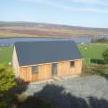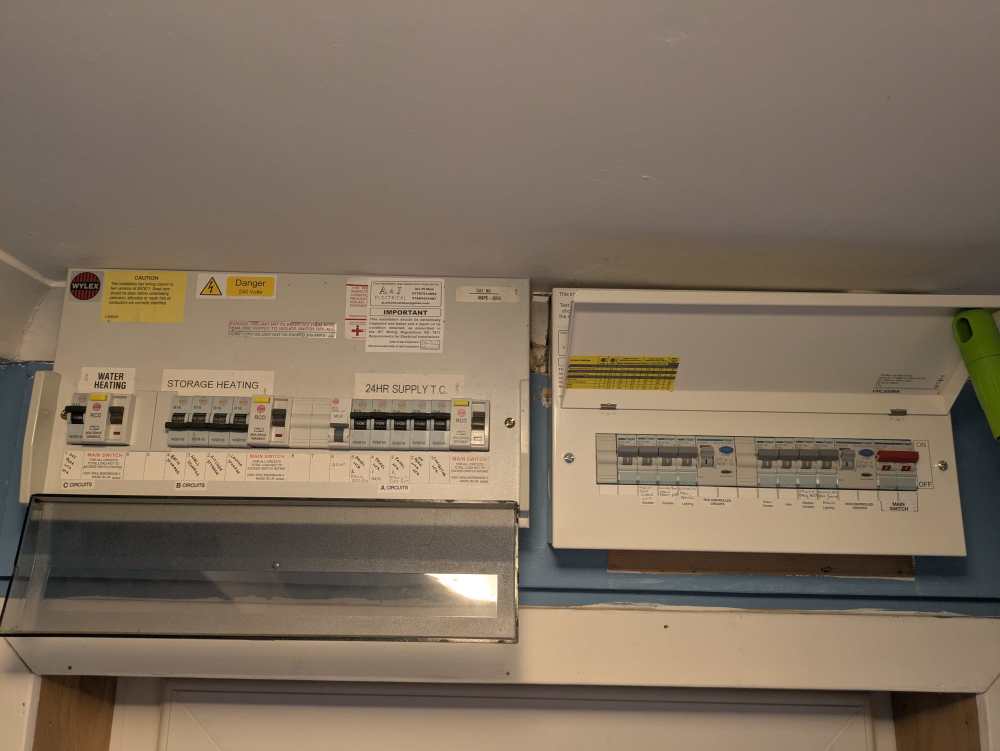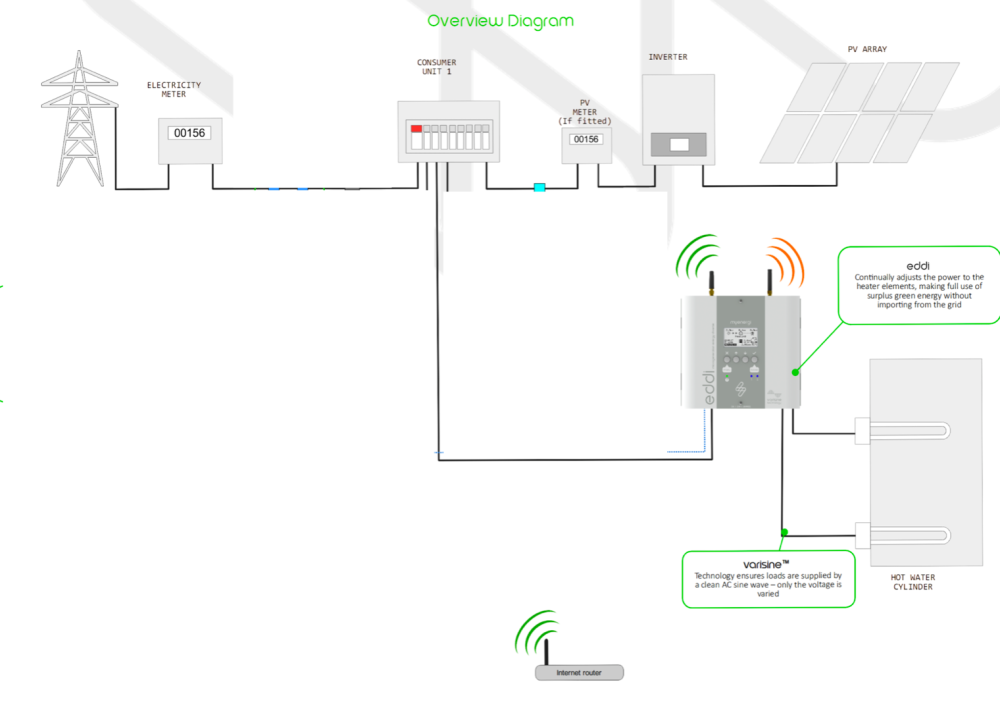-
Posts
3390 -
Joined
-
Last visited
-
Days Won
10
Crofter last won the day on September 29
Crofter had the most liked content!
Personal Information
-
Location
Isle of Skye
Recent Profile Visitors
11463 profile views
Crofter's Achievements

Advanced Member (5/5)
633
Reputation
-
It's not a hard run- just across some rough ground at the back of the garden. I'm not digging up a driveway, or even a lawn. So I don't think I'll regret it too much if I do end up having to re-do it. Anyway... cabling aside, with the rest of the installation, what would be best practise: - breaker and/or isolator up at the panels? - breaker between the Eddi and the immersion? - anything else that might not be obvious to me?
-
I appreciate that, I just thought maybe I was missing something. I'm not sure how likely an upgrade would be. I'll be maxing out my permitted development with this ground mount array, and the next sensible move would be adding something to the roof. I also have the other property which would benefit from a similar setup, and I'd likely do that project before I did any upgrades to this system. I hadn't heard that standard SWA wasn't suitable for DC. I thought that so long as you stayed within the voltage rating you'd be good. Would something like this be suitable? https://www.superlecdirect.com/6942x-6mm-2core-bs5467-xlpe-swa-pvc-cable-harmonised-black/ (the datasheet for the above cable shows DC and AC values. The 6mm2 is rated to 53A when buried in the ground, which is a lot of headroom for a system that should be generating around 15A)
-
That makes sense, thanks. I'm still wondering why the DC cables need to be so beefy. I did my initial calculations based on twelve 285w panels. That gives a minimum system voltage of 348v, and a maximum current of about 10A. Even a skinny little 1.5mm2 cable will only show a voltage drop of 1.82% over 25m. Upgrading to 4mm2 gets me down to 0.6%, and 6mm2 would be 0.45%. I just didn't think that was necessary? I could use a smaller number of larger panels, e.g. seven, giving me 234v/16A (gives a slightly smaller array overall). In this case 1.5mm2 is definitely too small (more than a 4% drop) but 2.5mm2 looks pretty good to me (2.6% drop). 4mm2 gives 1.6% drop. 6mm2 gives me a 1% drop. I've built a lot of off grid stuff where this kind of voltage drop is of no concern. but I appreciate that things are a bit different. When you have a panel pumping out 17v and you want 14v to charge a battery, you can afford to lose a whole volt somewhere and it will still work. I'll happily stump up for the chunkier cable, I just like to know why...
-
Thanks everyone. I'd initially read/heard that the long run should be before the inverter. Then somebody (on Faceache) said it was the other way round. Does the choice of panels affect this decision? E.g. if I had ten 300w panels, I'd be running about 300v DC or more. But if I had seven 500w panels instead, I'd have a lower voltage. You'd think you'd want the longest run to be where you run the highest voltage, for lowest losses and smaller cable sizes. Bear in mind I'm coming to this with fairly extensive off-grid experience so I have a certain amount of intuition which isn't necessarily helpful
-
So I've been told that it's best to place the inverter up at the array. I think I'll need to make some sort of enclosure for it due to the weather we get! I'm also a bit confused about cable sizes. By my understanding, if I have say ten panels in series, I'll have 300v minimum. For a 3kw array, that means about 10A. So I should be OK with a 1.5mm2 cable over my 25m run. But everything I read says I must use 4mm2 minimum. Am I fundamentally misunderstanding something here?
-
Are they honestly going around the country sticking in replacement meters and then walking away leaving the homeowner to pick up the tab for the re-wiring? The way this house was set up until recently, the panels heaters were the only form of heating in the bedrooms. So disconnecting those would not have been popular. I've had the A2A installed and those heaters are now defunct, but that was my choice. Will do... when the rain stops!
-
We have two CUs, the one on the left is the THTC one which is split in to two. I've just had it confirmed by OVO that we will get a single smart meter to replace the dual meters we currently have. I'd have thought that, to change to a single rate tariff, all they have to do is bill me at the same rate for everything. No re-wiring required. And just to complicate things, I want to add a diverter in to all of this. Hmmm.
-
-
So I'm going ahead with my plan for a ground mount array and a diverter. What's best practise for placement of breakers, isolators, etc? Thoughts on SWA vs a duct for the DC run? The inverter in using is IP rated but I think it's best to plan for it to be in the house anyway? It's about a 25m run from the array.
-
I'm not sure I've ever found Wikipedia to be wrong.
-
That's exactly what I've done. The A2A just runs off the cheap rate. OVO are trying to sell me their E9 plan which has off-peak dotted throughout the day, but of course none of the times really match up with when I'd want to run the A2A. And the off peak rate is only 1p less than I can get a single rate from another supplier. So the obvious thing to do is jump from THTC straight to single rate, but they aren't offering that. I'm not sure what the implications are for the wiring in the house. I mean, worst case, can't they just install whatever meters are required and just bill me at the same rate for everything that I use?
-
We're on the archaic Total Heating Total Control which was pretty common for houses using storage heaters, but is now being phased out. The Radio Teleswitch system is to be turned off imminently and we're being barraged with warnings from OVO, the electricity supplier, to get the meter swapped out for a smart meter. This is all well and good (assuming we have a good enough signal for the smart meter to work...) but they will not allow us to keep the current tariff, and are only offering us two flavours of dual-rate as a replacement. From back of envelope calculations, I can see that both will end up costing us more than we're currently spending. It looks like we'll be much better off switching to a single rate (especially once I have done my PV/diverter project) but they aren't offering that. Will I need to get them to install the smart meter first (which they won't do until I've chosen a tariff) and then move to single rate, possibly with a different supplier? Just FYI, we are using A2A heating so low overnight rates are of little use. Good for the immersion heater but that's all. What we want is the lowest possible rate accessible 24/7, as the times that we tend to run the A2A don't line up with off peak hours. And once I have my panels and diverter in place, I'm hoping that our immersion usage will drop substantially over the summer months, which is when the house is mostly occupied.





